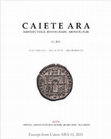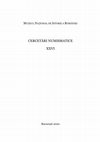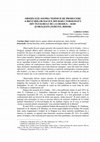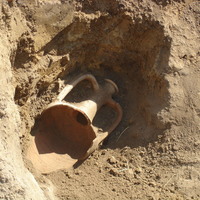Books by Corina Toma

Editura Mega, Cluj-Napoca, 2021
Cuvânt înainte vii Lista tabelelor, figurilor și planșelor 1. Istoria tezaurului descoperit la Fe... more Cuvânt înainte vii Lista tabelelor, figurilor și planșelor 1. Istoria tezaurului descoperit la Feniș (jud. Arad) 2. Descoperirile monetare de tip Mit Bartkranzavers / Toc-Chereluș 2.1. Tezaure și descoperiri monetare izolate 2.2. Monede identificate în arhivele caselor de licitație 3. Identitatea tipului monetar Mit Bartkranzavers / Toc-Chereluș 3.1. Iconografia monedelor 3.2. Filiația iconografică 3.3. Rolul de prototip al emisiunilor monetare Crișeni-Berchieș faza b și Sirmium faza B 4. Clasificările tipologice 5. Studiul ștanțelor și procesul de batere 5.1. Metoda de reconstituire a ștanțelor 5.2. Corpus-ul ștanțelor 5.3. Procesul de batere prin prisma legăturilor dintre ștanțe și a înrudirilor stilistice 6. Caracteristicile tehnice 6.1. Aspecte tehnologice 6.2. Calitatea aliajului 6.3. Defecte de batere 6.4. Intervenții asupra monedelor 6.5. Adânciturile semisferice 6.6. Ștanța monetară descoperită în atelierul din așezarea dacică de la Pecica 7. Localizarea și cronologia monedelor Mit Bartkranzavers / Toc-Chereluș 7.1. Harta descoperirilor monetare și interpretările istorice 7.2. Modelul de distribuție 7.3. Cronologiile tradiționale 7.4. Relația cu tetradrahmele Macedoniei Prima și cele de Thasos 7.5. Datarea propusă pentru monedele Mit Bartkranzavers / Toc Chereluș Bibliografie Appendix. Catalogul monedelor din tezaurul de la Feniș Planșe 1-92 Planșa 7. Ștanțele de revers R4 și R5 Planșa 8. Monede bătute cu perechile de ștanțe A3-R3, A3-R4 și A3-R5 Planșa 9. Perechea de ștanțe A4-R6 Planșa 10. Monede bătute cu perechea de ștanțe A4-R6 Planșa 11. Monede bătute cu perechea de ștanțe A4-R6 Planșa 12. Monede bătute cu perechea de ștanțe A4-R6 Planșa 13. Monede bătute cu perechea de ștanțe A4-R6 Planșa 14. Perechea de ștanțe A5-R7 Planșa 15. Monede bătute cu perechea de ștanțe A5-R7 Planșa 16. Monede bătute cu perechea de ștanțe A5-R7 216 Planșa 17. Monede bătute cu perechea de ștanțe A5-R7 Planșa 18. Monede bătute cu perechea de ștanțe A5-R7 Planșa 19. Ștanța de avers A6 și ștanțele de revers R7 și R8 Planșa 20. Ștanța de avers A7 Planșa 21. Ștanțele de revers R9 și R10, perechile ștanței de avers A7 Planșa 22. Ștanțele de revers R11 și R12, perechile ștanței de avers A7 Planșa 23. Ștanța de revers R13. Ștanțe de revers incerte asociate cu ștanța de avers A7 Planșa 24. Monede bătute cu perechea de ștanțe A7-R9 Planșa 25. Monede bătute cu perechea de ștanțe A7-R9 Planșa 26. Monede bătute cu perechea de ștanțe A7-R9 Planșa 27. Monede bătute cu perechile de ștanțe A7-R9 și A7-R10 Planșa 28. Monede bătute cu perechea de ștanțe A7-R10 Planșa 29. Monede bătute cu perechea de ștanțe A7-R10 Planșa 30. Monede bătute cu perechile de ștanțe A7-R10 și A7-R11 Planșa 31. Monede bătute cu perechile de ștanțe A7-R12 și A7-R13 Planșa 32. Monede bătute cu ștanța de avers A7, reversul incert Planșa 33. Monede bătute cu ștanța de avers A7, reversul incert Planșa 34. Monede bătute cu ștanța de avers A7, reversul incert Planșa 35. Ștanța de avers A8 Planșa 36. Ștanța de revers R14, perechea ștanței de avers A8 Planșa 37. Ștanțele de revers R15 și R16 Planșa 38. Monede bătute cu perechea de ștanțe A8-R14 Planșa 39. Monede bătute cu perechea de ștanțe A8-R14 Planșa 40. Monede bătute cu perechea de ștanțe A8-R14 Planșa 41. Monede bătute cu perechea de ștanțe A8-R15 Planșa 42. Monede bătute cu perechile de ștanțe A8-R15 și A8-R16 Planșa 43. Ștanța de avers A9 Planșa 44. Ștanța de revers R15 în asociere cu ștanța de avers A9 Planșa 45. Monede bătute cu perechea de ștanțe A9-R15 Planșa 46. Monede bătute cu perechea de ștanțe A9-R15 Planșa 47. Monede bătute cu perechea de ștanțe A9-R15 Planșa 48. Monede bătute cu perechea de ștanțe A9-R15 Planșa 49. Ștanța de avers A10 Planșa 50. Ștanța de revers R17 Planșa 51. Ștanța de revers R18, perechea ștanțelor de avers A10 și A11. Ștanțe de revers incerte asociate cu ștanța de avers A10 Planșa 52. Monede bătute cu perechea de ștanțe A10-R17 Planșa 53. Monede bătute cu perechea de ștanțe A10-R17 Planșa 54. Monede bătute cu perechile de ștanțe A10-R18 și A10-reversuri incerte Planșa 55. Ștanța de avers A11 Planșa 56. Monede bătute cu perechea de ștanțe A11
Archaeology by Corina Toma

Acta Musei Napocensis, 2021
Rezumat: Articolul prezintă tezaurul de podoabe dacice din argint descoperit la Uileacu de Criș (... more Rezumat: Articolul prezintă tezaurul de podoabe dacice din argint descoperit la Uileacu de Criș (jud. Bihor), compus din două colane: unul din bandă, celălalt din bară torsionată, două fibule cu scut rombic păstrate fragmentar, două pandantive și un inel. Potrivit cutumelor, fibulele cu scut rombic reprezintă reperul esențial în datarea tezaurului, dar periodizările existente le plasează în faze cronologice diferite: anii 75/50 î. Hr.-25/30 d. Hr. (Kurt Horedt și Aurel Rustoiu) sau 25 î. Hr.-25 d. Hr. (Daniel Spânu). Încercarea de datare a fibulelor cu placă rombică în funcție de asocierea cu alte tipuri de fibule nu a dus la un rezultat concludent. Pentru a clarifica datarea tezaurului de la Uileacu de Criș s-a recurs la analiza colanelor și a pandantivelor în contextul mai larg al tehnicii folosite: podoabe lucrate din plăci de argint și cele confecționate prin torsionarea barelor ori a sârmelor. În concluzie, ținând cont de neajunsurile metodologice și de modificările aduse cronologiei tetradrahmelor thasiene, drahmelor de Dyrrhachium și Apollonia și denarilor romani republicani, a căror dată de intrare în Dacia coboară începutul orfevreriei dacice cu aproximativ o jumatate de secol, se constată că împărțirea pieselor de podoabe pe grupe cronologice clar delimitate nu este posibilă. Ascunderea tezaurului de la Uileacu de Criș ar fi putut avea loc în perioada augusteică, dar podoabele erau în folosință de câteva decenii.
Abstract: The article presents the Dacian silver hoard found at Uileacu de Criş, Bihor County, composed of two necklaces, one made from a band, the other from a twisted bar, two rhombic plate fibulae kept fragmentarily, two pendants and a ring. According to custom, rhombic plate brooches represent the essential landmark in the dating of the hoard, but the proposed timeframes place them in different chronological phases: the years 75/50 BC-AD 25/30 (Kurt Horedt and Aurel Rustoiu) or 25 BC-AD 25 (Daniel Spânu). The attempt to date the rhombic plate brooches according to the association with other types of fibulae does not lead to a conclusive result. To clarify the dating of the hoard, we used the analysis of the necklaces and pendants in the broader context of adornments made with the two techniques: silver plates and twisted bars or wires. In conclusion, taking into account the methodological deficiencies and the changes in the chronology of Thasian tetradrachms, Dyrrhachium and Apollonia drachms and late Republican denarii, whose date of entry into Dacia goes down by about half a century the beginning of Dacian metalworking, it is found that the division of jewellery into clearly defined chronological groups is not possible. The hiding of the hoard from Uileacu de Criș could have taken place during the Augustan period, but the jewellery had been in use for several decades.

Cercetări numismatice, 2021
The article presents the minting process of the Mit Bartkranzavers/Toc-Chereluș coins through the... more The article presents the minting process of the Mit Bartkranzavers/Toc-Chereluș coins through the perspective of the links between dies and of the stylistic relationships. The dies used to strike the coins were identified with the help of the photography and digital drawing. In interpreting the links between the dies, we have used graphic representations (diagrams) and stylistic links, for the observation of which we resorted to the comparison by superimposing the images. The results differ from the conclusions drawn from typological classification, created based on the stylistic analysis and visual comparison of the coins, which led to the arbitrary grouping of coins and the creation of inexistent varieties. The diagram of the dies takes the shape of a discontinuous chain, composed, for each variant, of several sequences represented by groups and pairs of isolated dies. For a plausible ordering, we have resorted to stylistic analysis and, starting from the features of the monetary effigy, we have tried to establish relationships meant to unite these independent sequences. The stylistic relationships created a network that divides the Mit Bartkranzavers / Toc-Chereluș-common variety coins into two distinct series. Dies from the second series served as a model for issues that complete the corpus with new pairs of dies, which open the perspective on how the transition was made from the common variety to the Pecica variety. The coins of the transition variety identified in the archives of auction houses blur the break between the common variety and the Pecica variety, suggested by the structure of the hoards and the location of the discoveries. The different style, the metallographic structures, the distribution and the chronological succession of the varieties constituted arguments for the hypothetical identification of two workshops, in the sense of different craftsmen, without being able to exclude the change of the geographical location.

Caietele ARA 12 2021, 2021
The article brings back to attention the La Tène coin hoard found (during the 70's) at Sânnicolau... more The article brings back to attention the La Tène coin hoard found (during the 70's) at Sânnicolau Român (com. Cefa, Bihor county). The content of the hoard has only been partially recovered: 24 from circa 100 coins, one of them Toc-Chereluș type, and the others Medieșu Aurit type-group c. Using the relationship between these two type of coins, we reopen the discussion about the characteristics of Medieșu Aurit coins, and the issue of dating them in relation with the Toc-Chereluș scyphate. Rezumat: Articolul readuce în atenție tezaurul format din monede de tip Medieșu Aurit și Toc-Chereluș găsit, în anii '70, în așezarea de epocă La Tène din hotarul localității Sânnicolau Român (com. Cefa, jud. Bihor). Pornind de la asocierea inedită a celor două tipuri monetare sunt readuse în discuție caracteristicile emisiunilor din seria Medieșu Aurit și, prin prisma relației cu "scyphatele" de tip Toc-Chereluș, problema datării acestora.
Acta Electrotehnica, 2020
This paper proposes a topic that involves engineering-specific measurements that are applied in t... more This paper proposes a topic that involves engineering-specific measurements that are applied in the field of numismatics. Historians have often assumed the silvering or silver plating of Toc-Cherelus type Dacian coins, a fact that remained only at a speculative level until performing investigations by technical means. In this sense, a set of four Dacian coins of Toc-Cherelus type belonging to the collections of Criş County Museum were subjected to SEM analyzes, in order to investigate their composition (namely the percentage of copper and silver) and the way this composition varies on the surface of the coin, but also in the depth of the coin pellet.

Cercetări Numismatice, 2019
The article brings back to attention the Toc Chereluș type monetary finds from Pecica (Arad count... more The article brings back to attention the Toc Chereluș type monetary finds from Pecica (Arad county), that represent coin type variants from the second category. The coins from the numismatic collection of the National History Museum of Romania are divided in two batches: the first one consists of 17 coins that were transferred from the Coin Room of the Romanian Academy Library, while the other consists of five coins that were purchased in 1980. Since the circumstances of their discovery are not known, we can't include them in a single hoard, however, stylistic similarities and their source (being acquired from the same collector), support this hypothesis. The dies study helped us identify four obverse dies-three for the first batch, and one for the second-, but, due to the state of preservation of the coins, the situation of the reverse dies remains uncertain. Since we lack a hoarding pattern for the Toc-Chereluș coin types, identifying the typological variants or the dies is not reliable enough proof to establish to which category (one or two hoards) the Pecica coins belong.
Crisia, 2020
The article brings back to attention the La Tène coin hoard found (during the 70’s) at Sânnicolau... more The article brings back to attention the La Tène coin hoard found (during the 70’s) at Sânnicolau Roman
(com. Cefa, Bihor County). The content of hoard has only been partially recovered: 24 from circa 100 coins,
one of them Toc-Chereluș type, and the others Medieșu Aurit type – group c. Using the relationship between
these two type of coins, we reopen the discussion about the characteristics of Medieșu Aurit type-coins, and
the issue of dating them in relation with the Toc-Chereluș scyphate.
Cercetări Numismatice, 2020
About 45 analyses have been made on Toc-Chereluș coins using energydispersive X-Ray fluorescence ... more About 45 analyses have been made on Toc-Chereluș coins using energydispersive X-Ray fluorescence in order to determine the original silver-copper
alloys composition. The coins analyzed came from hoards found at Pecica and
Feniș (Arad County). This analysis has shown that the main feature of the silvercopper alloys was the low fineness (average silver percentage under that of the
copper). Considerable variation in copper and silver content exists and the
increased content of tin might indicate that the silver was probably debased with
bronze comprising copper and tin rather than pure copper. The unexpected
presence of zinc and lead was also discussed. The hypothesis according to which
the coins were made out of a base metal core plated with silver could not be
confirmed.

Cercetări Numismatice, 2020
The topic of this article is the lesser known coin-type named “Șilindia”.
Following a brief intro... more The topic of this article is the lesser known coin-type named “Șilindia”.
Following a brief introduction of the presence of these coins in the hoard from
Șilindia, the only known find until now, we proceed to a dies study. The starting
point is represented by the research of Eugen Chirilă and his collaborators on the
90 coins of this type from Șilindia hoard. The results obtained by the editors
interpreting the connections between variants and the unclear numbering of dies
determined us to check the die corpus and to verify the viability of the variants. The
die identification was made using the digital over-lay method, by superimposing
the digital drawings on top of each other in Corel Draw software, which eliminates
the difficulties of visual examination.
The new corpus contains four obverse dies instead of eleven and eight
reverse dies instead of more than ten (the number is unclear) as the editors of the
Șilindia hoard claimed. Giving up links between variants, which in some cases
proved to be wrong composed, we use the relationship between dies and the
diagrams of the die combinations (die charts) to identify the characteristics of the
minting process for these coins. Finally, we analyzed the relationship between the
Șilindia coin-type and the so-called “Mit Wulstlorbeer und Reiter” (apud K. Pink)
or Agriș B – Șilindia / Șilindia “apropiat de prototipul postum Filip II” (apud C.
Preda) coins.

Acta Musei Napocensis 57/I, , 2020
The article resumes the topic of the lineage relationship between the Crișeni-Berchieș stage b is... more The article resumes the topic of the lineage relationship between the Crișeni-Berchieș stage b issues and Toc-Chereluș imitations. The coin hoards found at Ostrovul Șimian (Romania) and Krčedin (Serbia) and the hybrid issues legitimize Karl Pink’s view on locating coins Crișeni-Berchieș stage b in the Scordisci area. The relationship with the Sirmium type and the Dyrrhachium drachmas amends the chronology of the Crișeni-Berchieș stage b issues, which goes back from the first half of the 2nd century BC to the end of this century or (sooner) early 1st century BC.
Aspects related to the prototype’s location and dating directly impact the establishment of the Toc-Chereluș scyphates’ chronology. The Toc-Chereluș scyphates are the result of mixing two monetary types issued in the Scordisci area: the Crișeni-Berchieș stage b issues for the obverse and those of type Sirmium for the reverse. The chronology of the Toc-Chereluș imitations, broadly framed to the second half of the 2nd century BC and first decades of the following century is therefore narrowed down. Copies cannot precede the prototype and, given also the suggested chronology for the Macedonia Prima and Thasos tetradrachms, we believe that Toc-Chereluș coins were struck after early 1st century BC. As a result, the hypothesis on the continuity of the local mint from Dacia must be abandoned, since between the Celtic coinage in the first stage and the Toc-Chereluș scyphates, which together with those intra-Carpathian compose the second stage, there is a gap of almost half a century.

STUDIA NUMISMATICA ET ARCHAEOLOGICA In honorem magistri Virgilii Mihailescu-Bîrliba oblata, 2018
With the study of the coins from Șilindia hoard in sight, this article is re-opening the subject ... more With the study of the coins from Șilindia hoard in sight, this article is re-opening the subject of the coin-type named “Agriș” or “Agriș – Șilindia”. Following a brief presentation of the existing typological frames and the selection of the coins that fit this type (group XIII / subgroup 2), and those that are connected with it (group XIII / subgroup 3), we present a study of the dies, reconstructed using digital drawings made in Corel Draw. Using the relationship between dies and the diagrams of the die combinations (die charts) as a starting point, we try to identify the characteristics of the minting process for each of the two subgroups attributed to the “Agriș – Șilindia” type. Finally, we reach the conclusion that the subgroups we analyzed are two distinct coin-types. The first one, represents the “Agriș – Șilindia” coin-type (called “Mit Dreifachem Perlkranz und Reiter” by Karl Pink). The second one, which is related to the “Tulghieș – Mireșu Mare with bow” coin-type, through their obverse and with “Agriș – Șilindia” coin-type through their reverse, creates a distinctive iconographic coin-type which is hard to name, knowing the fact that the Șilindia hoard has already a multitude of monetary novelties, not yet clearly defined in the Romanian numismatic literature.
Crisia XLIII 2013
The uniqueness of the hoard from Tasad (Bihor County) is conferred by the circumstances and conte... more The uniqueness of the hoard from Tasad (Bihor County) is conferred by the circumstances and context of its discovery, but also by its composition. When he first published the lot, N. Chidioşan classified the lot of artifacts found inside the workshop as illustrating a complete cycle of production, which contained finished products (knotted brooches and a necklace), unfinished products still in work (a bracelet or a necklace) and raw materials (two silver bars).
Crisia XLV/2015
Versiunea în limba română a articolului Half‑finished knobbed brooches within on... more Crisia XLV/2015
Versiunea în limba română a articolului Half‑finished knobbed brooches within one of the hoards at Sacalasău Nou (Bihor county), ACTA MN 50/1, 2013

Sargetia, 2013
ObservaŃiile directe asupra pieselor din tezaurele dacice de la Oradea -Sere şi Drăgeşti (judeŃul... more ObservaŃiile directe asupra pieselor din tezaurele dacice de la Oradea -Sere şi Drăgeşti (judeŃul Bihor) oferă informaŃii noi cu privire la tehnica de realizare a brăŃărilor din bară de argint torsionată. Ruperea accidentală de către descoperitori a brăŃării de la Drăgeşti a evidenŃiat existenŃa în secŃiunea barei a unei tije-miez învelită într-o foaie metalică. ŞănŃuirea realizată înainte de torsionarea barei a secŃionat placa exterioară, aproximativ pe jumătate din grosimea ei, fără a atinge miezul. Deteriorările de pe suprafaŃa brăŃării de la Oradea -Sere, păstrată întreagă, permit identificarea aceleiaşi tehnici de confecŃionare dintr-o bară-miez învelită într-o placă metalică. În lipsa analizelor metalografice am evitat folosirea sintagmei "miez din metal de calitate inferioară". Având în vedere tehnica folosită şi analizele metalografice existente pentru alte brăŃării "cu miez şi înveliş" este posibil ca tija interioară să conŃină un aliaj pe bază de argint, dar cu un conŃinut mai mare de cupru.

Crisia, 2007
Opiniile istoriografice asupra situaţiei din părţile vestice ale Daciei preromane au ca punct de ... more Opiniile istoriografice asupra situaţiei din părţile vestice ale Daciei preromane au ca punct de plecare sursele literare antice şi datele arheologice 1. Aportul celor din urmă depinde de gradul de investigare a siturilor şi de publicarea materialelor dacice descoperite pe teritoriul Ungariei. Importanţa datelor arheologice ne-a determinat să alcătuim, pe baza informaţiilor adunate din publicaţiile maghiare accesibile şi a unei liste a materialelor dacice descoperite pe teritoriul Ungariei şi păstrate la Muzeul Naţional din Budapesta 2 , un repertoriu orientativ. În ciuda numărului relativ mare al descoperirilor catalogate, foarte puţine piese au un context clar de provenienţă, majoritatea fiind descoperiri întâmplătore sau piese păstrate în colecţiile muzeale, fapt care restrânge sfera observaţiilor. Punctele în care sunt semnalate materiale dacice se plasează în jumătatea estică a Ungariei actuale. Spre deosebire de hărţile anterioare întocmite de M. Párducz 3 sau Z. Visy 4 , care indicau o concentrare a descoperirilor dacice în zona Criş-Tisa-Mureş şi în zona cotului Dunării (în jurul Budapestei), observaţii care rămân valabile, descoperirile amintite de M. Barbu acoperă o arie mai largă, în special în zona interfluviului dintre Dunăre şi Tisa. În ceea ce priveşte conţinutul descoperirilor, din cele 89 de puncte repertoriate: • 66 puncte conţin materiale dacice (fragmente ceramice dacice şi piese de podoabă) fără a fi precizat contextul descoperirii. • 16 puncte semnalează material dacic apărut în contexte sarmatice, descoperirile fiind plasate de-a lungul Tisei, în zona delimitată la nord de confluenţa râului Sájo cu Tisa şi la sud de cursul inferior al Mureşului (











Uploads
Books by Corina Toma
Archaeology by Corina Toma
Abstract: The article presents the Dacian silver hoard found at Uileacu de Criş, Bihor County, composed of two necklaces, one made from a band, the other from a twisted bar, two rhombic plate fibulae kept fragmentarily, two pendants and a ring. According to custom, rhombic plate brooches represent the essential landmark in the dating of the hoard, but the proposed timeframes place them in different chronological phases: the years 75/50 BC-AD 25/30 (Kurt Horedt and Aurel Rustoiu) or 25 BC-AD 25 (Daniel Spânu). The attempt to date the rhombic plate brooches according to the association with other types of fibulae does not lead to a conclusive result. To clarify the dating of the hoard, we used the analysis of the necklaces and pendants in the broader context of adornments made with the two techniques: silver plates and twisted bars or wires. In conclusion, taking into account the methodological deficiencies and the changes in the chronology of Thasian tetradrachms, Dyrrhachium and Apollonia drachms and late Republican denarii, whose date of entry into Dacia goes down by about half a century the beginning of Dacian metalworking, it is found that the division of jewellery into clearly defined chronological groups is not possible. The hiding of the hoard from Uileacu de Criș could have taken place during the Augustan period, but the jewellery had been in use for several decades.
(com. Cefa, Bihor County). The content of hoard has only been partially recovered: 24 from circa 100 coins,
one of them Toc-Chereluș type, and the others Medieșu Aurit type – group c. Using the relationship between
these two type of coins, we reopen the discussion about the characteristics of Medieșu Aurit type-coins, and
the issue of dating them in relation with the Toc-Chereluș scyphate.
alloys composition. The coins analyzed came from hoards found at Pecica and
Feniș (Arad County). This analysis has shown that the main feature of the silvercopper alloys was the low fineness (average silver percentage under that of the
copper). Considerable variation in copper and silver content exists and the
increased content of tin might indicate that the silver was probably debased with
bronze comprising copper and tin rather than pure copper. The unexpected
presence of zinc and lead was also discussed. The hypothesis according to which
the coins were made out of a base metal core plated with silver could not be
confirmed.
Following a brief introduction of the presence of these coins in the hoard from
Șilindia, the only known find until now, we proceed to a dies study. The starting
point is represented by the research of Eugen Chirilă and his collaborators on the
90 coins of this type from Șilindia hoard. The results obtained by the editors
interpreting the connections between variants and the unclear numbering of dies
determined us to check the die corpus and to verify the viability of the variants. The
die identification was made using the digital over-lay method, by superimposing
the digital drawings on top of each other in Corel Draw software, which eliminates
the difficulties of visual examination.
The new corpus contains four obverse dies instead of eleven and eight
reverse dies instead of more than ten (the number is unclear) as the editors of the
Șilindia hoard claimed. Giving up links between variants, which in some cases
proved to be wrong composed, we use the relationship between dies and the
diagrams of the die combinations (die charts) to identify the characteristics of the
minting process for these coins. Finally, we analyzed the relationship between the
Șilindia coin-type and the so-called “Mit Wulstlorbeer und Reiter” (apud K. Pink)
or Agriș B – Șilindia / Șilindia “apropiat de prototipul postum Filip II” (apud C.
Preda) coins.
Aspects related to the prototype’s location and dating directly impact the establishment of the Toc-Chereluș scyphates’ chronology. The Toc-Chereluș scyphates are the result of mixing two monetary types issued in the Scordisci area: the Crișeni-Berchieș stage b issues for the obverse and those of type Sirmium for the reverse. The chronology of the Toc-Chereluș imitations, broadly framed to the second half of the 2nd century BC and first decades of the following century is therefore narrowed down. Copies cannot precede the prototype and, given also the suggested chronology for the Macedonia Prima and Thasos tetradrachms, we believe that Toc-Chereluș coins were struck after early 1st century BC. As a result, the hypothesis on the continuity of the local mint from Dacia must be abandoned, since between the Celtic coinage in the first stage and the Toc-Chereluș scyphates, which together with those intra-Carpathian compose the second stage, there is a gap of almost half a century.
Versiunea în limba română a articolului Half‑finished knobbed brooches within one of the hoards at Sacalasău Nou (Bihor county), ACTA MN 50/1, 2013
Abstract: The article presents the Dacian silver hoard found at Uileacu de Criş, Bihor County, composed of two necklaces, one made from a band, the other from a twisted bar, two rhombic plate fibulae kept fragmentarily, two pendants and a ring. According to custom, rhombic plate brooches represent the essential landmark in the dating of the hoard, but the proposed timeframes place them in different chronological phases: the years 75/50 BC-AD 25/30 (Kurt Horedt and Aurel Rustoiu) or 25 BC-AD 25 (Daniel Spânu). The attempt to date the rhombic plate brooches according to the association with other types of fibulae does not lead to a conclusive result. To clarify the dating of the hoard, we used the analysis of the necklaces and pendants in the broader context of adornments made with the two techniques: silver plates and twisted bars or wires. In conclusion, taking into account the methodological deficiencies and the changes in the chronology of Thasian tetradrachms, Dyrrhachium and Apollonia drachms and late Republican denarii, whose date of entry into Dacia goes down by about half a century the beginning of Dacian metalworking, it is found that the division of jewellery into clearly defined chronological groups is not possible. The hiding of the hoard from Uileacu de Criș could have taken place during the Augustan period, but the jewellery had been in use for several decades.
(com. Cefa, Bihor County). The content of hoard has only been partially recovered: 24 from circa 100 coins,
one of them Toc-Chereluș type, and the others Medieșu Aurit type – group c. Using the relationship between
these two type of coins, we reopen the discussion about the characteristics of Medieșu Aurit type-coins, and
the issue of dating them in relation with the Toc-Chereluș scyphate.
alloys composition. The coins analyzed came from hoards found at Pecica and
Feniș (Arad County). This analysis has shown that the main feature of the silvercopper alloys was the low fineness (average silver percentage under that of the
copper). Considerable variation in copper and silver content exists and the
increased content of tin might indicate that the silver was probably debased with
bronze comprising copper and tin rather than pure copper. The unexpected
presence of zinc and lead was also discussed. The hypothesis according to which
the coins were made out of a base metal core plated with silver could not be
confirmed.
Following a brief introduction of the presence of these coins in the hoard from
Șilindia, the only known find until now, we proceed to a dies study. The starting
point is represented by the research of Eugen Chirilă and his collaborators on the
90 coins of this type from Șilindia hoard. The results obtained by the editors
interpreting the connections between variants and the unclear numbering of dies
determined us to check the die corpus and to verify the viability of the variants. The
die identification was made using the digital over-lay method, by superimposing
the digital drawings on top of each other in Corel Draw software, which eliminates
the difficulties of visual examination.
The new corpus contains four obverse dies instead of eleven and eight
reverse dies instead of more than ten (the number is unclear) as the editors of the
Șilindia hoard claimed. Giving up links between variants, which in some cases
proved to be wrong composed, we use the relationship between dies and the
diagrams of the die combinations (die charts) to identify the characteristics of the
minting process for these coins. Finally, we analyzed the relationship between the
Șilindia coin-type and the so-called “Mit Wulstlorbeer und Reiter” (apud K. Pink)
or Agriș B – Șilindia / Șilindia “apropiat de prototipul postum Filip II” (apud C.
Preda) coins.
Aspects related to the prototype’s location and dating directly impact the establishment of the Toc-Chereluș scyphates’ chronology. The Toc-Chereluș scyphates are the result of mixing two monetary types issued in the Scordisci area: the Crișeni-Berchieș stage b issues for the obverse and those of type Sirmium for the reverse. The chronology of the Toc-Chereluș imitations, broadly framed to the second half of the 2nd century BC and first decades of the following century is therefore narrowed down. Copies cannot precede the prototype and, given also the suggested chronology for the Macedonia Prima and Thasos tetradrachms, we believe that Toc-Chereluș coins were struck after early 1st century BC. As a result, the hypothesis on the continuity of the local mint from Dacia must be abandoned, since between the Celtic coinage in the first stage and the Toc-Chereluș scyphates, which together with those intra-Carpathian compose the second stage, there is a gap of almost half a century.
Versiunea în limba română a articolului Half‑finished knobbed brooches within one of the hoards at Sacalasău Nou (Bihor county), ACTA MN 50/1, 2013
In this article, the catalog will be organized based on the coins issuers, and at the end of each chapter we will add brief notes regarding the mints, mint craftsmen, forgeries or hybrid coin editions that are different from the coins in the catalog.
Besides the basic coin identification, we also used a indicative calculation of the contemporary value completed by an approximation of the exchange rates on the period of the accumulation and hiding of the hoard. The hoard is mainly composed by coins of small value, used in daily transactions, especially in rural areas and in conformity with the exchange rates the estimated value of the hoard ranges around the modest amount of 8-9 florini or roughly 13-15 talers.
The hiding of these coins can be connected with the historical events of the time, and the general climate of unrest and incertitude, caused mainly by the presence of the Austrian troops in the region, or even more likely, the hiding of the hoard was caused by the otoman siege against the fortress of Oradea in 1598.